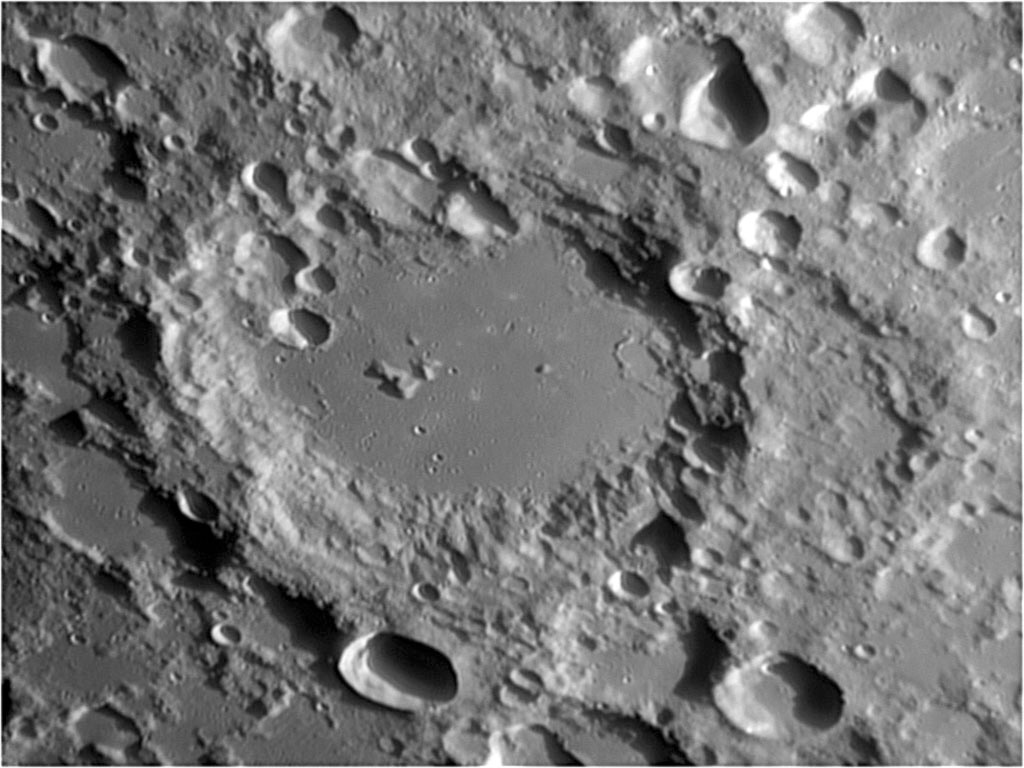
image by Jérôme Grenier, Paris, France
Longomontanus has two contrasting landforms that are only accidentally related to the crater itself. First is the relatively smooth material that floors the crater. Its pacity of moderate diameter impact craters suggests an age considerably younger than the crater rim. This smooth material apparently flowed, for it embayed the rims of craters near the east and west edges of the floor. Similar smooth material is ponded within the old craters just outside the western wall of Longomontanus and also high on its northeastern rim. The standard interpretation is that this material is fluidized ejecta from Orientale (or perhaps Imbrium) which ballistically arrived as still hot debris that flowed into depressions. The second type of feature here that is unrelated to Longomontanus are the clusters of overlapping craters. The most conspicuous is on the north-northwest rim, and a second cluster shreds the eastern rim. These are interpreted as secondary craters from the formation of the Imbrium Basin, 2600 km to the north. Because the basin secondaries are not visible on the floor of Longomontanus it is tempting to speculate that the smooth floor material is younger than the secondaries and thus may have come from Orientale.
Technical Details:
19 December 2007. Dmk31 AF03,Orion Optics (UK) OMC 12″ + barlow 2x + red filter.
Related Links:
Rükl plates 72
Jérôme’s website.
Yesterday's LPOD: Western Triplet
Tomorrow's LPOD: Light & Dark Rainbow Hues
COMMENTS?
Register, Log in, and join in the comments.



